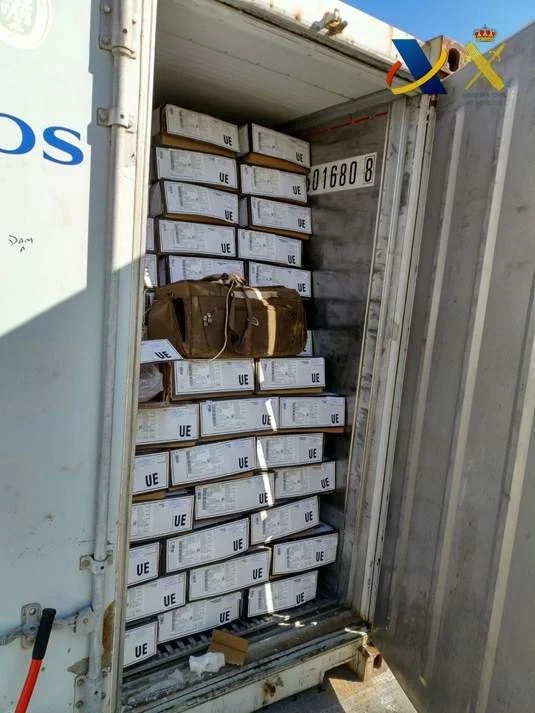Rip-on/rip-off modus operandi - what is the impact for the shipping industry?
29 June 2023
The organised criminal groups responsible for cocaine trafficking worldwide are continuing to evolve their routes and methods. The most frequently used modus operandi, known as ‘rip-on/rip-off’, represents a potential threat to shipping and logistic companies.
By Maria Sole Brigati, Intern Security Analyst
Cocaine trafficking is a global business which is managed by organised criminal groups (OCGs). Most cocaine is produced in Latin American countries, and it is later illegally trafficked on a global scale through different routes and modus operandi. It is estimated that 90% of the cocaine produced is moved via sea. Many times, these groups smuggle cocaine on merchant ships, making them unwittingly complicit and threatening their operations.
When OCGs arrange to traffic cocaine by exploiting merchant ships, they usually use the method known as ‘rip-on/rip-off’, described by the UNODC as “a concealment methodology whereby a legitimate shipment, usually containerised, is exploited to smuggle [cocaine] from the country of origin or the transshipment port to the country of destination.” In order to be accomplished, this method requires corrupting crew members and port authorities who would serve as facilitators in the traffic by allowing criminal groups to contaminate the containers. In its most basic form, the drugs are barely concealed in the container at all.
In some cases, OCSs will decide to utilise containers carrying perishable goods to rapidly get cocaine out of ports. In particular, large amounts of cocaine have been seized inside cargos transporting fruit and frozen foods. As a recent example, on 26 June, almost 3,600 kg of cocaine (worth 269 million euros) were seized in the port of Rotterdam, hidden in a container of bananas from Ecuador. The first motive why criminal groups target this type of container is because, being perishable goods, there is pressure to move the container as soon as possible to preserve the shipment. Moreover, perishable goods are usually transported in refrigerated containers, which presents a lot of places to hide illicit goods. Indeed, cocaine is often found in the motor of the container.
According to reports, criminal groups have perfected the ‘rip-on/rip-off’ method to the point they can easily remove 100kg of cocaine from a shipment container in three minutes. “Clearers”, the name given to those individuals responsible for removing drugs from the shipment, can open the container and seal it again without even letting the shipper or the consignee be aware that the shipment was used to smuggle illicit substances.
The advanced level of development of this technique makes merchant ships, operating on specific routes, particularly vulnerable to the threat of cocaine smuggling. Those cargo carrying perishable goods in particularly may suffer reputational damages linked to low-quality control services or corruption, if their containers be used for smuggling purposes. Moreover, a ship found with cocaine inside a container can be detained by the authorities for a prolonged time, eventually ruining the load of perishable goods. In this case, they could suffer a loss of trust from some of their clients. Lastly, it has been reported that in some countries, such as Ecuador, crew members have been threatened with violence to load cocaine on board, which represents a direct threat to the safety of a company’s operators. As the threat continues to evolve, so do the solutions to mitigate potential consequences for shipping companies.
RELATED CONTENT:
Learn more about the increasing use of container shipping for drug smuggling, the methods employed by criminal groups, and the importance of anti-bribery and corruption control in combating this issue in Jeanne Albin’s analyst briefing.
RISK ASSESSMENT REPORTS:
There are several Risk Intelligence reports that can help you assess the risk of a specific route, or provide further background for decision-making in the form of a threat assessment
Risk Intelligence’s risk assessment reports feature in-depth analyses of current or forecasted threats for specific client operations - a region or a route - and serve as a foundation for decision-making.


